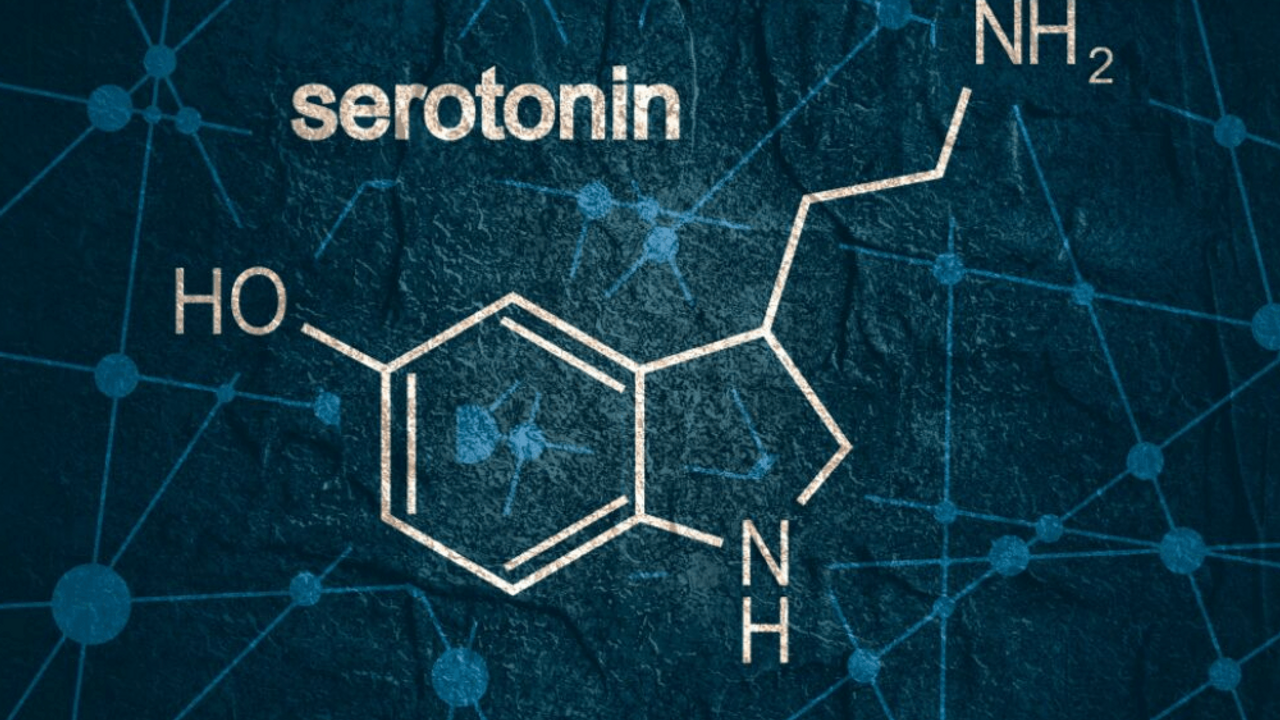Serotonin Myths & Mechanisms
Apr 15, 2021
Serotonin is a neurotransmitter that has become one of the most highly talked about substances in the body in decades. Most widely known as our body’s own in built antidepressant and feel good chemical, everyone is talking about it, and if you type it into social media…buckle up! Everyone wants to boost serotonin. Increase levels of serotonin. Get more serotonin, yet know very little about it. It is a media darling right now, and with this has come profound misunderstanding and myths, one of which I am pretty sure you will be familiar with. So, with that in mind let's take a look at what serotonin is, what it does and most importantly where it does what, then look at the myths that abound around it.
What IS Serotonin?
Serotonin is a neurotransmitter, and a hormone, depending where it is found. A neurotransmitter means that it is a substance that relays messages between nerve cells or a nerve cell and a target tissue such as a muscle or a gland. As you may be aware, signals in our nerves are carried by means of an electrical impulse, called an Action Potential. This travels along the length of the nerve at lightening speed. However, nerve cells do not touch, neither do nerves and target tissues. There is a gap between them. The action potential cannot jump the gap between neighbouring nerves or nerve and target tissue. Therefore this electrical impulse is converted into a chemical messenger - a neurotransmitter, that can cross this gap and relay the signal to the next nerve in line, or the nerve and target tissue. The neurotransmitters are stored in small bubbles called vesicles that fuse with the membrane of the neuron and spit their contents out into the synaptic space. Neighbouring neurons or target tissues will have a host of neurotransmitter receptors on them in varying numbers, so that they can receive the relevant signal and take the relevant action. Different neurotransmitters relay different types of messages.
Serotonin is derived from the amino acid tryptophan which we get from our diet, and is found abundantly in the body. The amino acid tryptophan is first converted via hydroxylation into 5-hydroxytryptophan (5-HTP). From there 5-HTP is decarboxylated to form 5-HT or Serotonin. It is distributed widely across many body systems and this is where some of the misunderstandings have come about around serotonin. Let me make something very clear. Serotonin will play different roles in different parts of the body and we must stop applying 1+1 logic to biochemical systems. So to clear up the confusion and get all our ducks in a row, let's explore the many roles of serotonin and put the myths to bed.
Serotonin in the Central nervous System
Lets start in the most obvious place. The role of serotonin in the nervous system. This is where serotonin delivers its most well known activities - influencing mood and sleep. In the central nervous system serotonin is synthesised and stored in the presynaptic neurons. The most well known of all actions of serotonin is of course the regulation of mood. We know that serotonin is in essence the feel good chemical. It can keep us feeling upbeat and happy. So potent is this effect, that serotonin has become a target for antidepressant drug therapy and the most well known group of antidepressant drugs are the SSRI’s (Selective Serotonin Reuptake Inhibitors). Serotonin, as discussed above like all neurotransmitters are stored in vesicles in the presynaptic neuronal membrane. They are released into the synaptic space, and then after a short time, any serotonin that hasn’t bound to receptors during that time frame will be reabsorbed back into the presynaptic neuron. As the name suggests, SSRI’s prevent or at least slow down this reabsorption so that the serotonin released can stay in the synaptic space for longer and get more opportunity to bind to receptors and instigate action.
Serotonin is also the precursor for the hormone melatonin - remember serotonin can be neurotransmitter, hormone or mitogen (induces cell division). Melatonin is the hormone that sets the clock. It gets us to sleep and keeps us asleep ensuring a good restorative restful nights sleep.
Serotonin in The Gut
So here we go….time to open a can of worms. One of the main things that has been dominating the media in recent months is the gut brain link. People saying the gut is our second brain for example (seriously….what????). There has been particular discussion around the fact that a very high percentage of the body’s serotonin is found within the gut. This has led people to think that if you look after your gut, then you wont get depression and even more of a leap, that looking after your gut can cure depression, through the serotonin mechanism alone. Now, I will do another article later on about the ways in which gut health will improve many aspects of our health. But, the point I want to get across here is next time on social media you see someone waxing lyrical about how most of our serotonin is found in the gut and therefore your gut affects your mood, know that it is not true at all. Serotonin is absolutely produced in the gut, by the enterochromaffin cells. That doesn’t mean they are going to catapult it to your brain.
Serotonin in the brain does brain stuff - ie improve mood. Serotonin in the gut does gut stuff! One of the key things that serotonin does in the gut is regulate gut motility. It regulates the regular peristaltic tone, which is the rhythmical contractions of the gut wall that help move things along their rightful trajectory. Serotonin does though have a great influence for when this needs to be accelerated somewhat. If you think about what happens when we get a touch of food poisoning, things start to be ejected from the body rather rapidly and forcefully. Serotonin is responsible for emesis (vomiting) and diarrhoea.
Serotonin also goes some way to regulate appetite too along with other hormones such as leptin and ghrelin. Remember its movement from hormone to neurotransmitter is determined by the tissue it is found within.
Cardiovascular Effects of Serotonin
If we needed greater support for the argument that serotonin’s roles are unique and specific to the tissue that it is found in, then these next functions will offer that support.
Serotonin can have notable influence within the cardiovascular system. This was actually how serotonin was first discovered by Rapport et al in 1948. They found it while searching for a vasoconstrictive substance that was found in platelets. Vasoconstriction is the contracting of blood vessels which raises the pressure within them. This can be used by the body to force oxygen and nutrients to tissues when they have a greater demand for example, but vasoconstriction exacerbated can of course be a pathological influence as well. Early researchers found that serum samples contained this vasoconstrictive function, but plasma didn’t, and it was therefore eventually confirmed that this substance found in platelets, later named serotonin, was responsible for the vasoconstrictive activity.
Serotonin in platelets is also shown to be part of the cascade that induces platelet aggregation, otherwise known as blood clotting.
Serotonin and The Skeleton
Serotonin can play a role in bone remodelling. This is the natural break down and rebuilding of our bone. This is conducted by two types of cells - osteoblasts and osteoclasts. OsteoBlasts Build - they lay down fresh calcium phosphate deposits in the skeletal matrix. OsteoClasts Cut - they dissolve calcium phosphate in the skeletal matrix in order to rebuild and lay down fresh bone. The balance between these two is vital. Serotonin has been shown to be produced locally in the skeleton and can regulate the activity of these cell types.
In conclusion
Hopefully you now have a greater and broader understanding of serotonin and its roles in the body. Mostly I really wanted to show that it is a substance that is found in many parts of the body, and as such plays many many roles in many different places. Making assumptions about its presence in one place influencing another, and then giving people advice on this as a potential treatment plan is not only misleading, it is also wrong from an ethical point of view. Anyway….thats it….time to put the soap box back under my desk and go and make a green tea!




